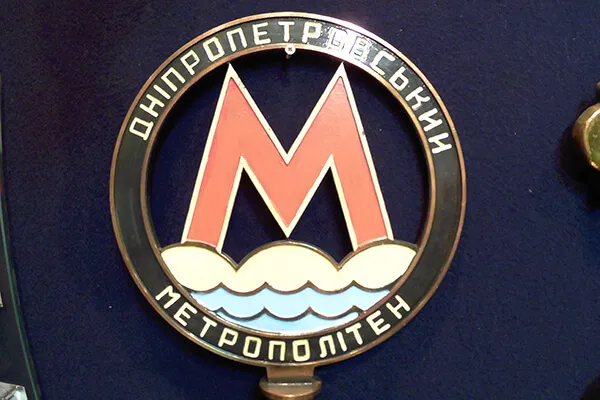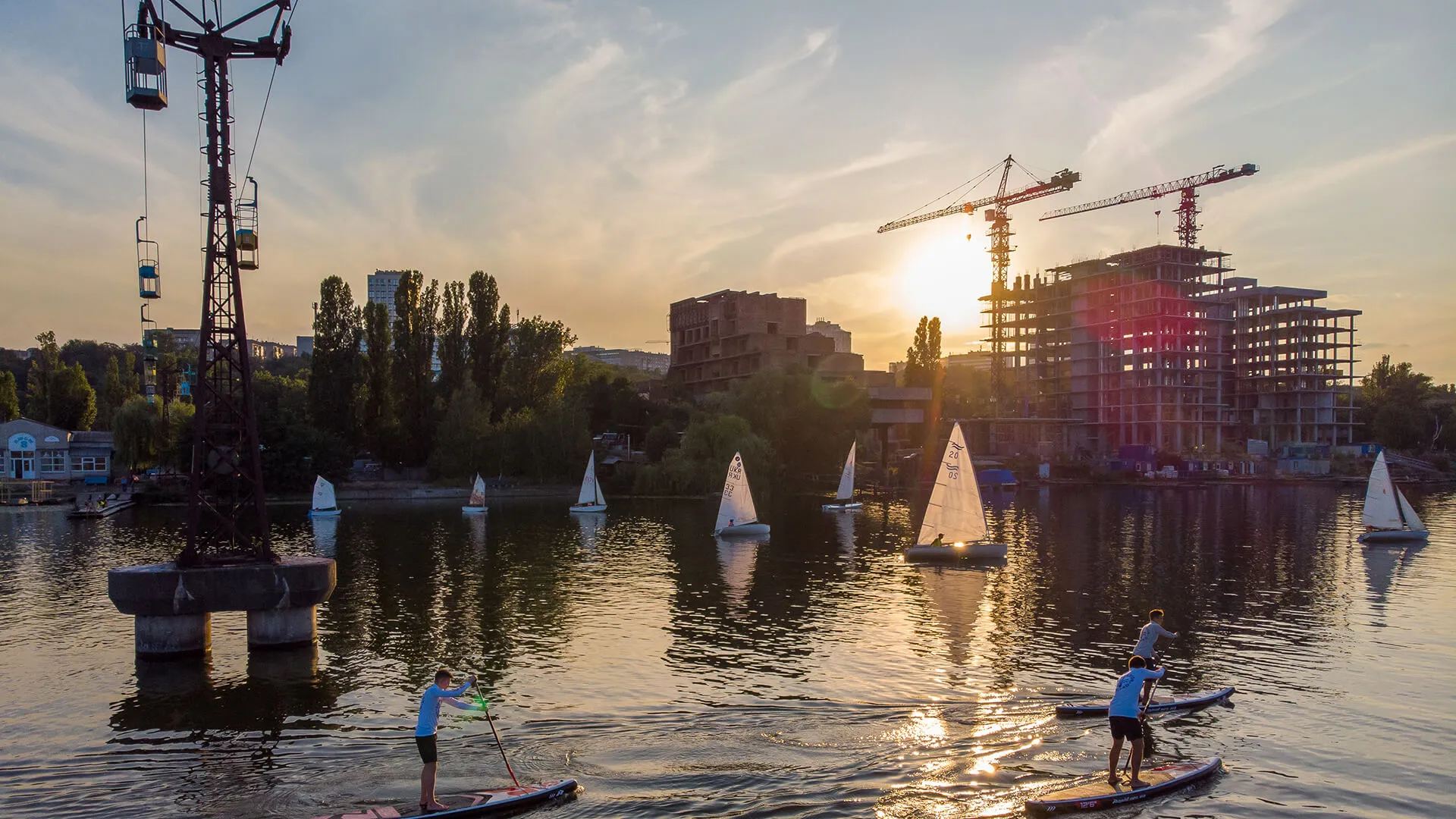
The virtual museification of the cable car and my involvement in it. Memories
Preface
While preparing the previous material on the Dnipro ropeway, something reminded me. Since this memory does not concern my examination of this outstanding abandon, I decided to write a separate reminiscence article. So I want to tell you an interesting story about my (actually not only mine, and the friends involved) participation in the «virtual museification» of this transportation object. Consider this longread as a text version of the backstage of the creation of interesting museum content.
When the ropeway was on the balance sheet of the «Department of Transport and Infrastructure of Dnipro» – they were in charge of it, and therefore they kept several dismantled (for some technical reasons) cabins in their warehouses (and probably still keep them). One of the booths «№77» was given to the private technical museum of «Time Machine».
This cabin – as an exhibit, with the assistance of «Cultural Capital», became the embodiment of an interesting idea of «museification» of the Dnipro (Petrovsky) cable car. This is how the pilot project «3D-Kabinka» was born, which further combined real museum exhibits with virtual (VR360) video content.
By the way, the idea to make a virtual video accompaniment of transport exhibits at the museums arose after a team of bloggers in Dnipro, led by Artem Kostyuk, began to shoot the so-called «transport vlogs» that have become quite popular in the city – the first such video in 2019 was «Selfie video Dnipro trolleybus», and a year later already shot transport vlogs in VR360 format.
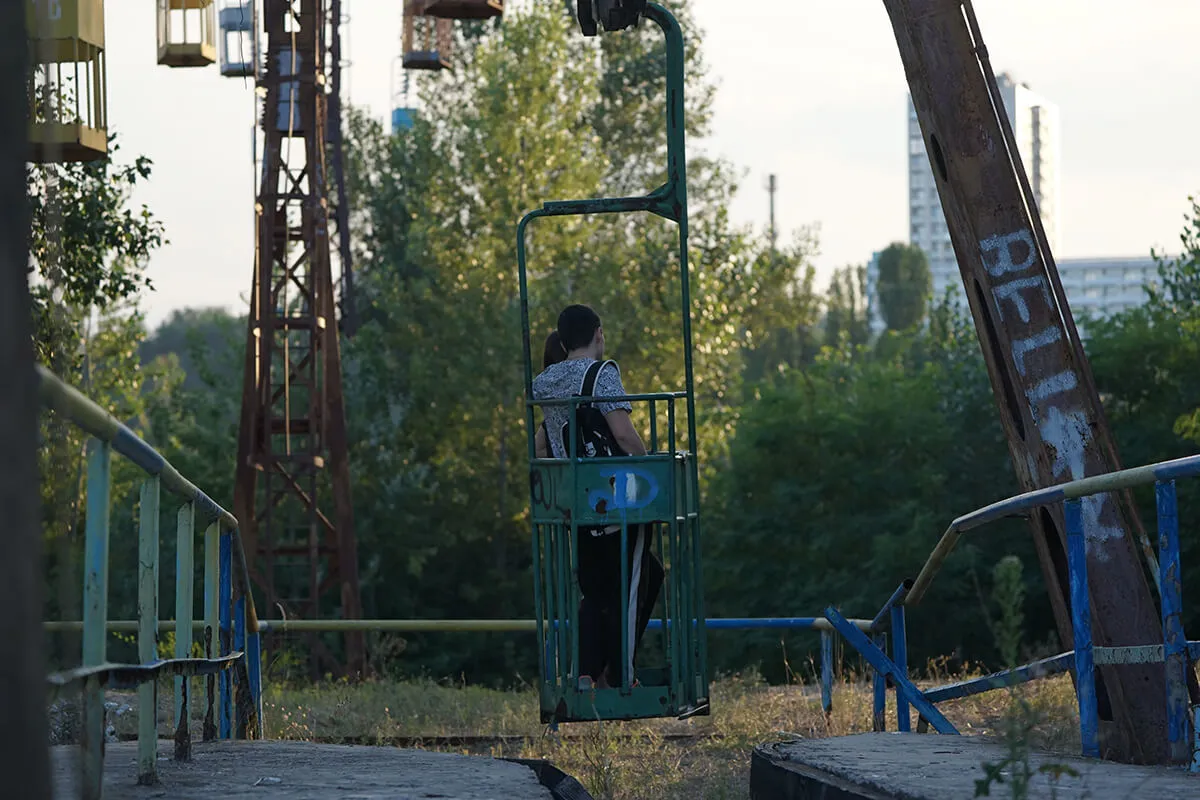
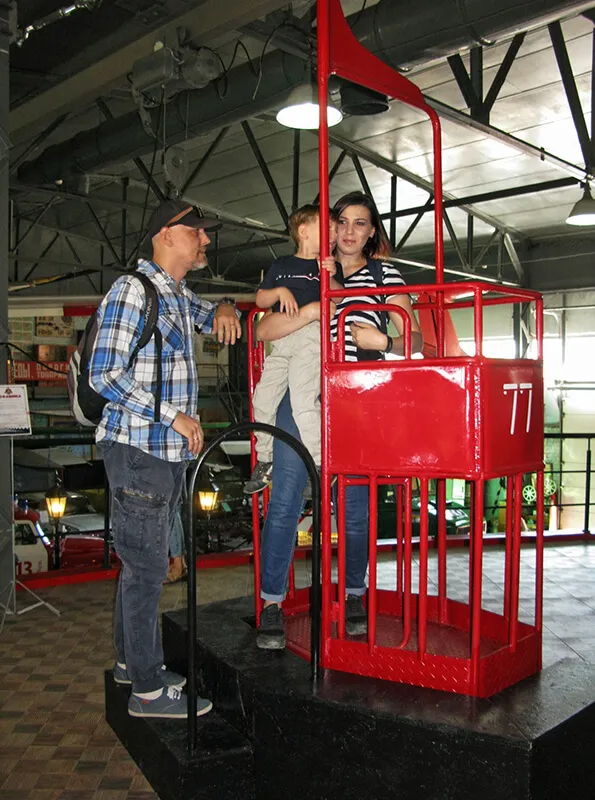
Shooting day
The filming lasted two days and involved a lot of interesting people as characters and extras – so the filming days were more like a promenade-performance with additional resources of rowing and sailing boats. Much was written about this event in the media – so I will not repeat myself. A few friends of mine (together with whom I created those «transportation blogs», namely such projects as DNIPRO TECHNO SUBWAY, and SNOWPLOW TRAM C-9) were involved in the filming process:
Artem Bloshchinsky is an IT guy, also a photographer-videographer, known for his video reviews of the city of Dnipro, including in VR360 format.
Alex Kolbasin is a game developer, also a renowned videographer photographer, and a fierce drone enthusiast who then shot a nice backstage of the event.
Artem Kostyuk is a designer and a well-known blogger and history researcher (he was the ideologist of the «transportation blogs» of Dnieper) – who suggested just such a format of video accompaniment to the museum exhibits.
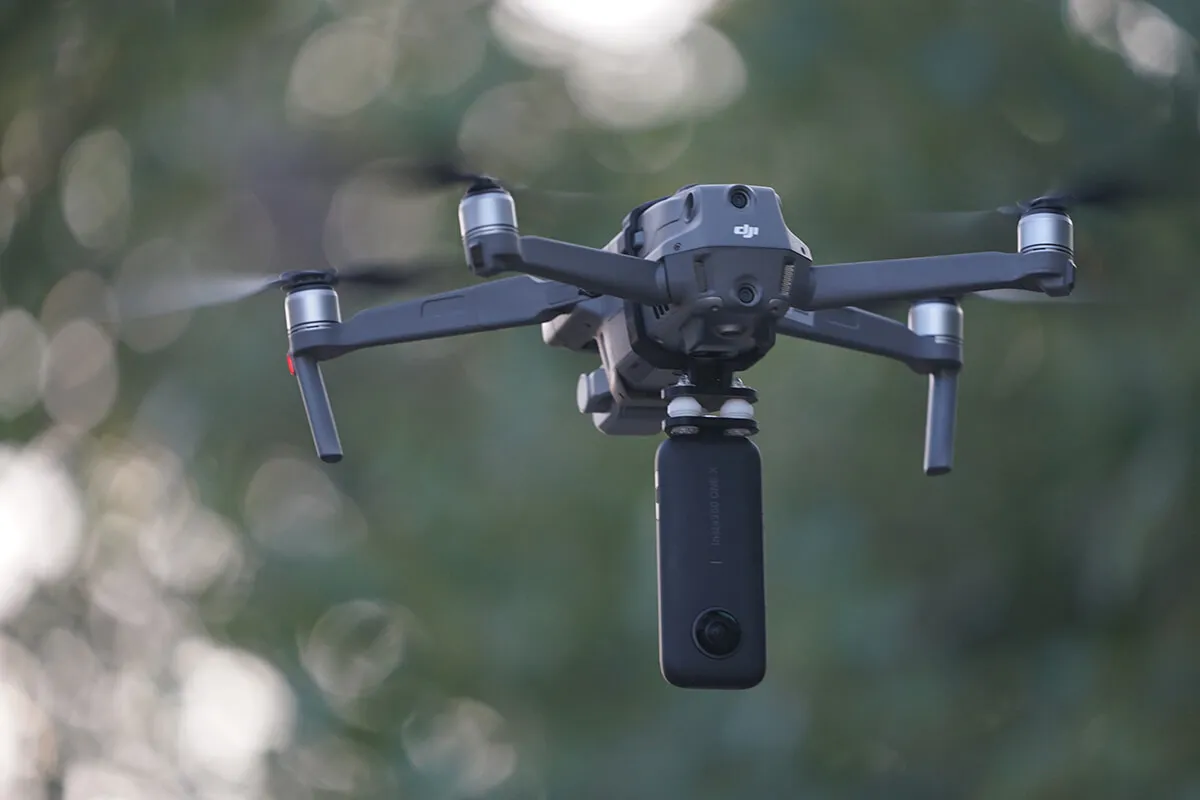
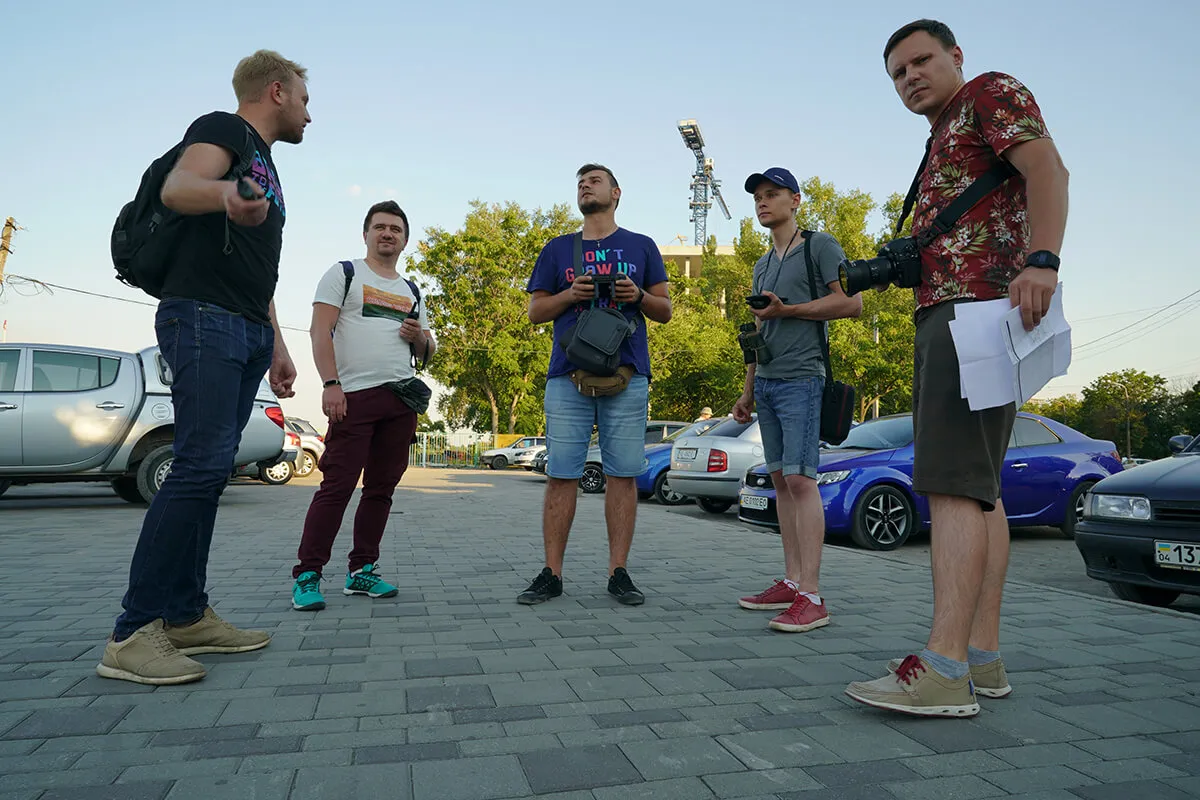
The guys made test flights and bought a special suspension that allowed them to attach a 360 camera to the quadrocopter. Since the camera was too big for their drone (the drone was loose and the video was not stable enough), Nikolay Khudoley, an experienced cameraman with a more powerful drone, was brought in to shoot. While Alex and both Artem focused on shooting backstages and photo-fixing.
Thus, on the shooting day, they filmed on 360-video two sections – from the boarding platform on Monastyrsky Island through the Archbishop’s Strait to the boat station and from here along the embankment to the pedestrian bridge to the island and then flying into the heights above the Dnieper River….
I’m adding some screenshots from the virtual video – to understand the flight path:
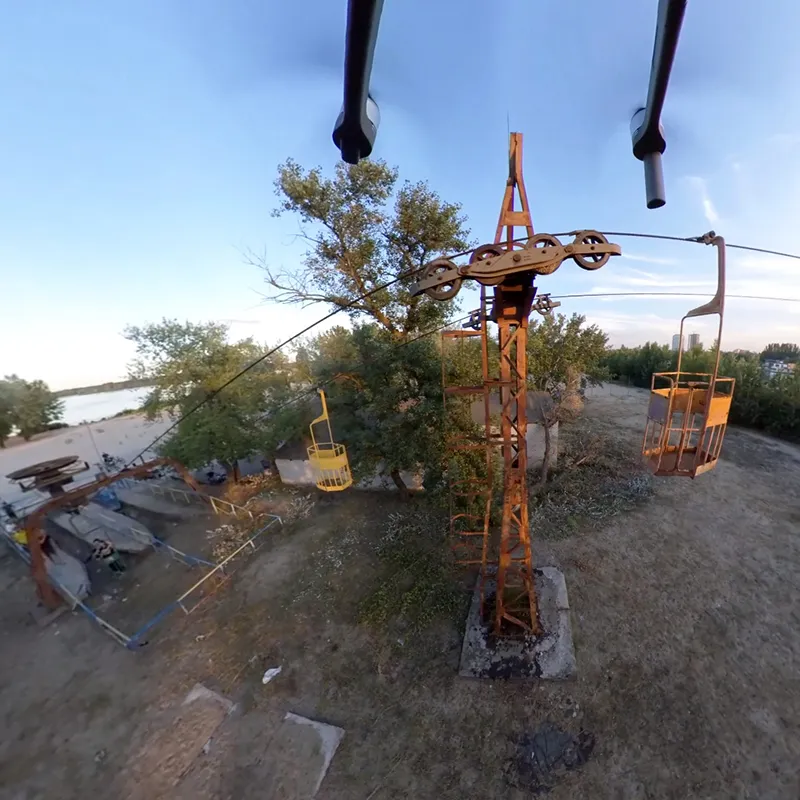
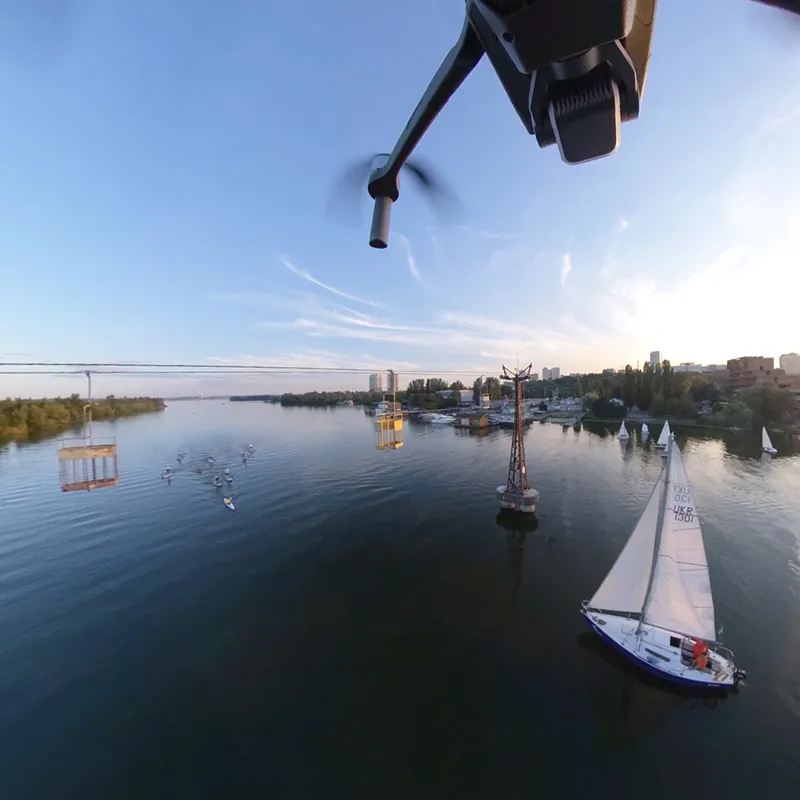
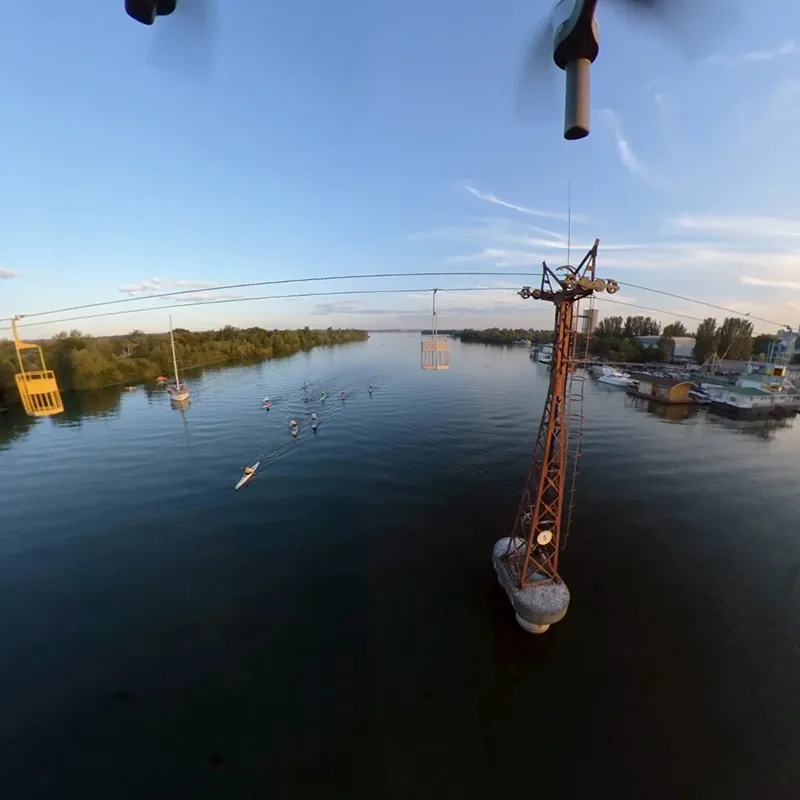
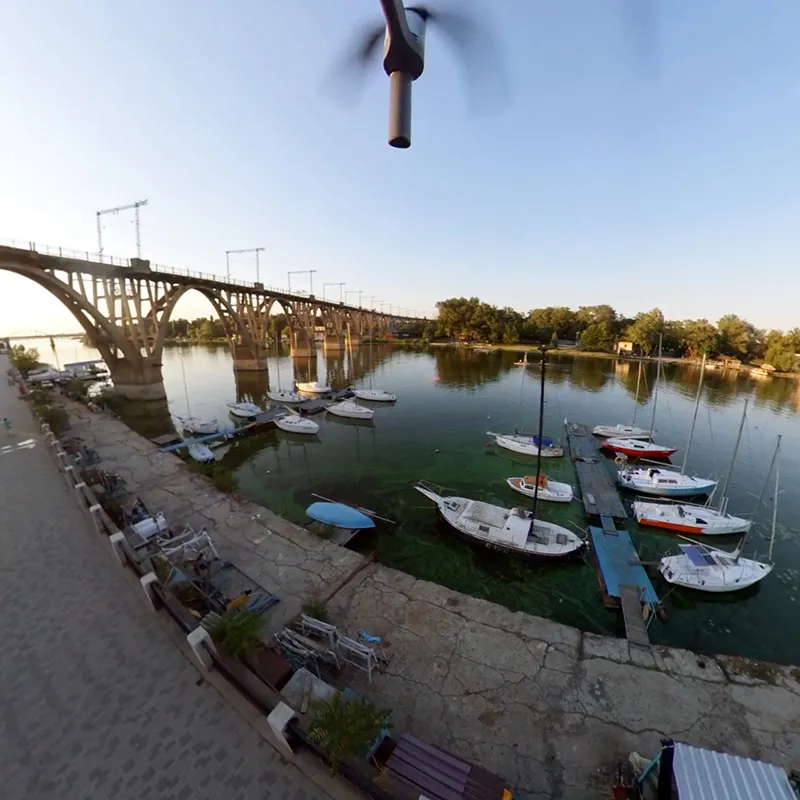
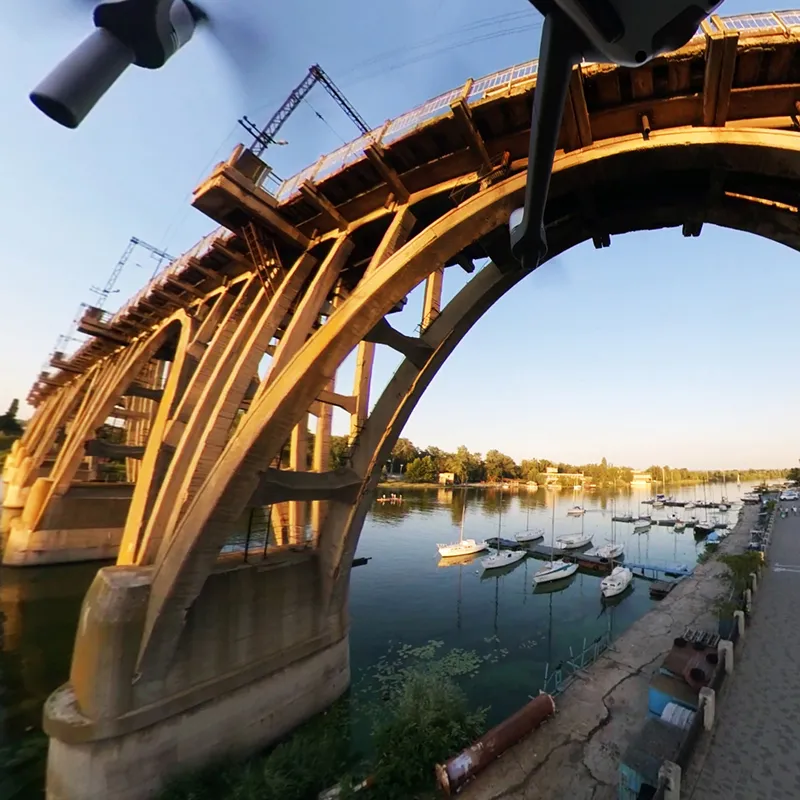
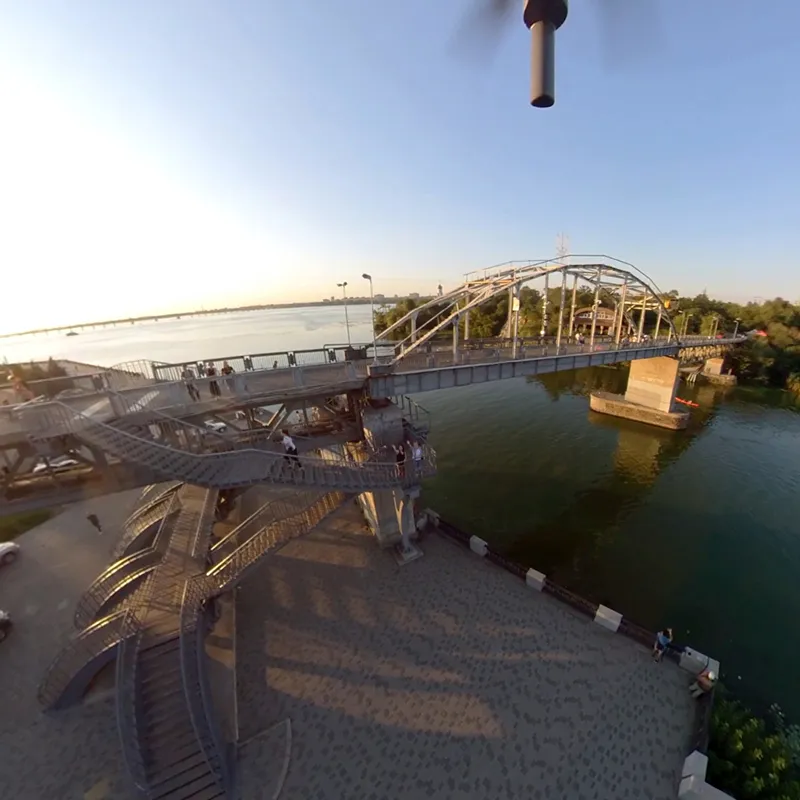
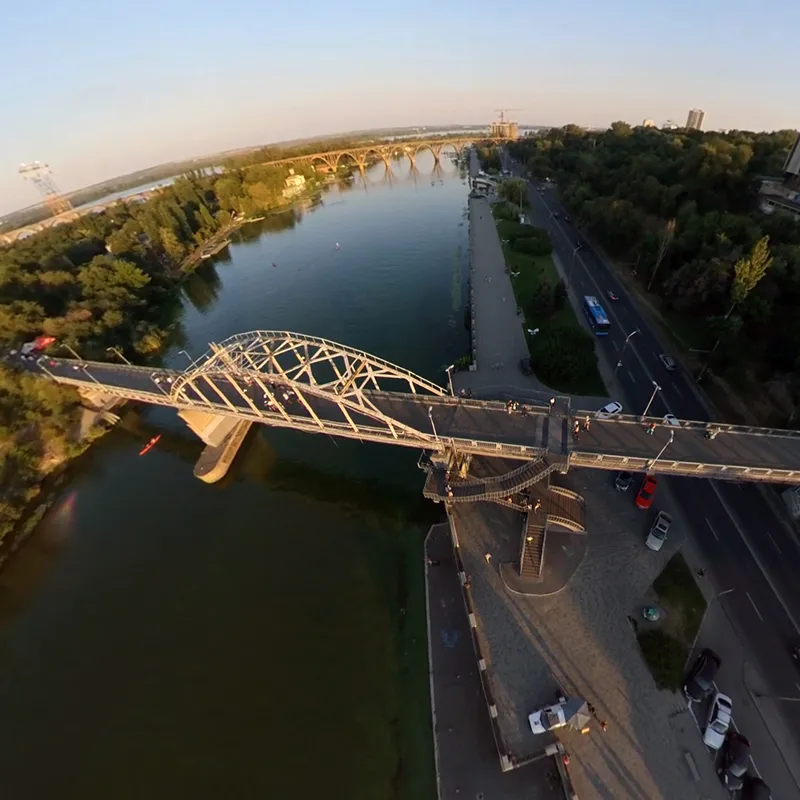
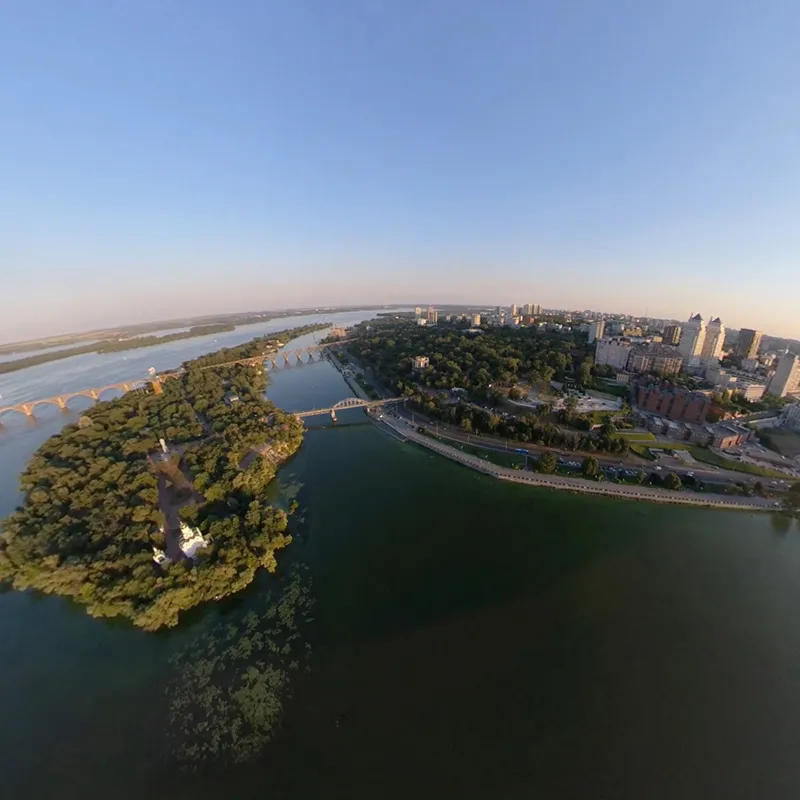
Later we filmed the final part of the video in the museum itself near the «exhibit booth» – where both Artem and I with my little one were in the frame ))))
Artem Kostyuk was in charge of media support for this project. He, knowing that I had to edit VR360 videos before, involved me as an unofficial consultant, and then asked me to edit a pilot video related to the ropeway (after me there were several more such videos).
Although the project turned out to be interesting, my participation in it was doubtful (yes – I had certain doubts, because I had a lot of work to do at that time, and the museum did not promise me anything concrete for it). I agreed, but only because I was invited by a friend (my support was needed at that time) – thus I became involved in the «virtual museification» of the Dnipro ropeway. So the work on video editing began.
The only thing that was not clear to me was why the right bank station was not filmed for museification?
But Artem Kostyuk answered this question for me. According to him, the crew considered filming the right-bank station, but given its poor state of neglect and the large number of tall trees that engulfed the station itself, this route was abandoned, because these were the main obstacles to drone filming. Indeed, no one could guarantee that a drone with an extra camera would not snag some branch and the expensive filming equipment would not be completely wasted. There were no additional costs for the risks, so it was decided not to show the right bank station at all, but instead to show beautiful views of the Archbishop’s Strait and the embankment – that’s why they chose this route option.
Since my memories of the summer condition of the ropeway reach back to the times when it was still active and more or less cleared, and my recent photo-fixation from the previous post was taken on the last day of fall (the trees were already leafless) – I didn’t fully feel the absorption of the object by vegetation, but the photos provided to me by Alexander Gotviansky confirm it.
The station was swallowed by uncontrollably growing trees / Photo: Alexander Gotvyansky / 08.06.2022
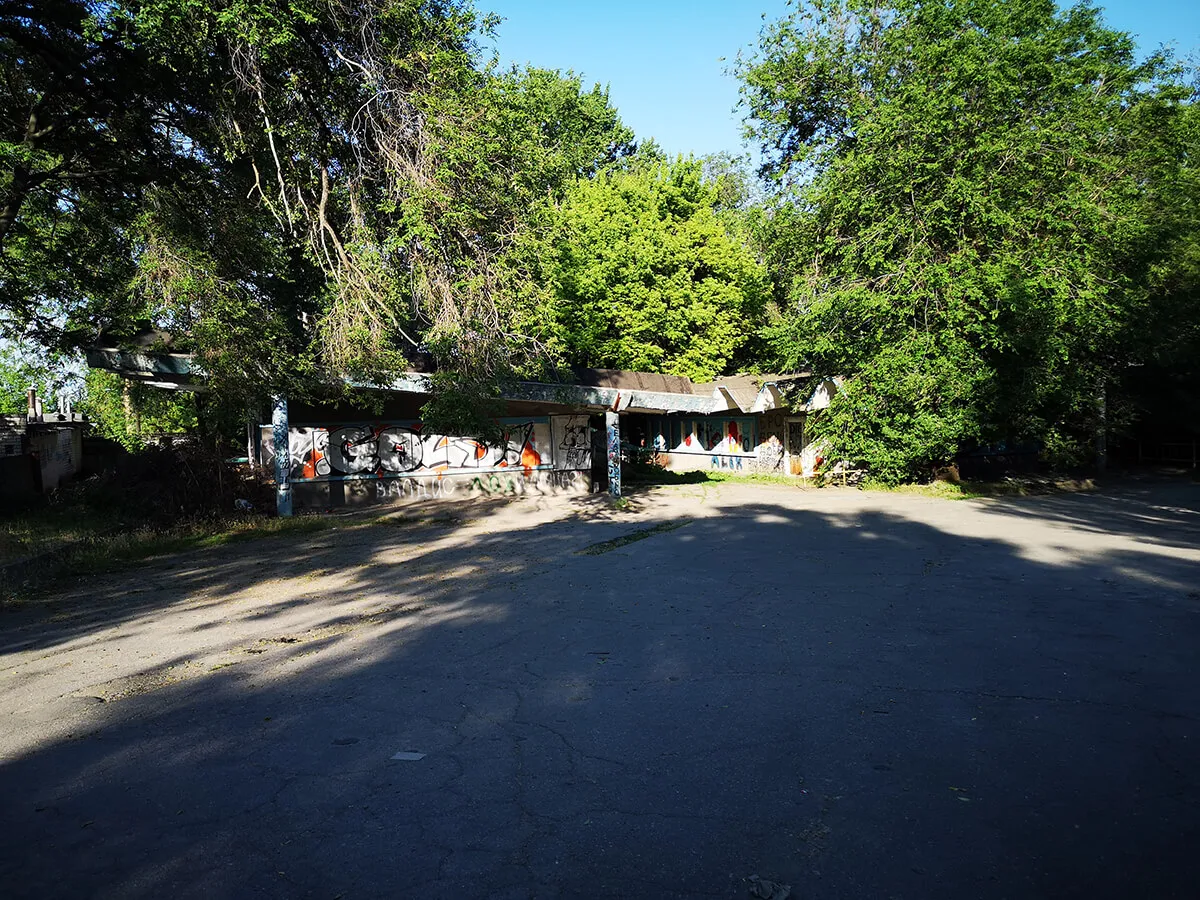
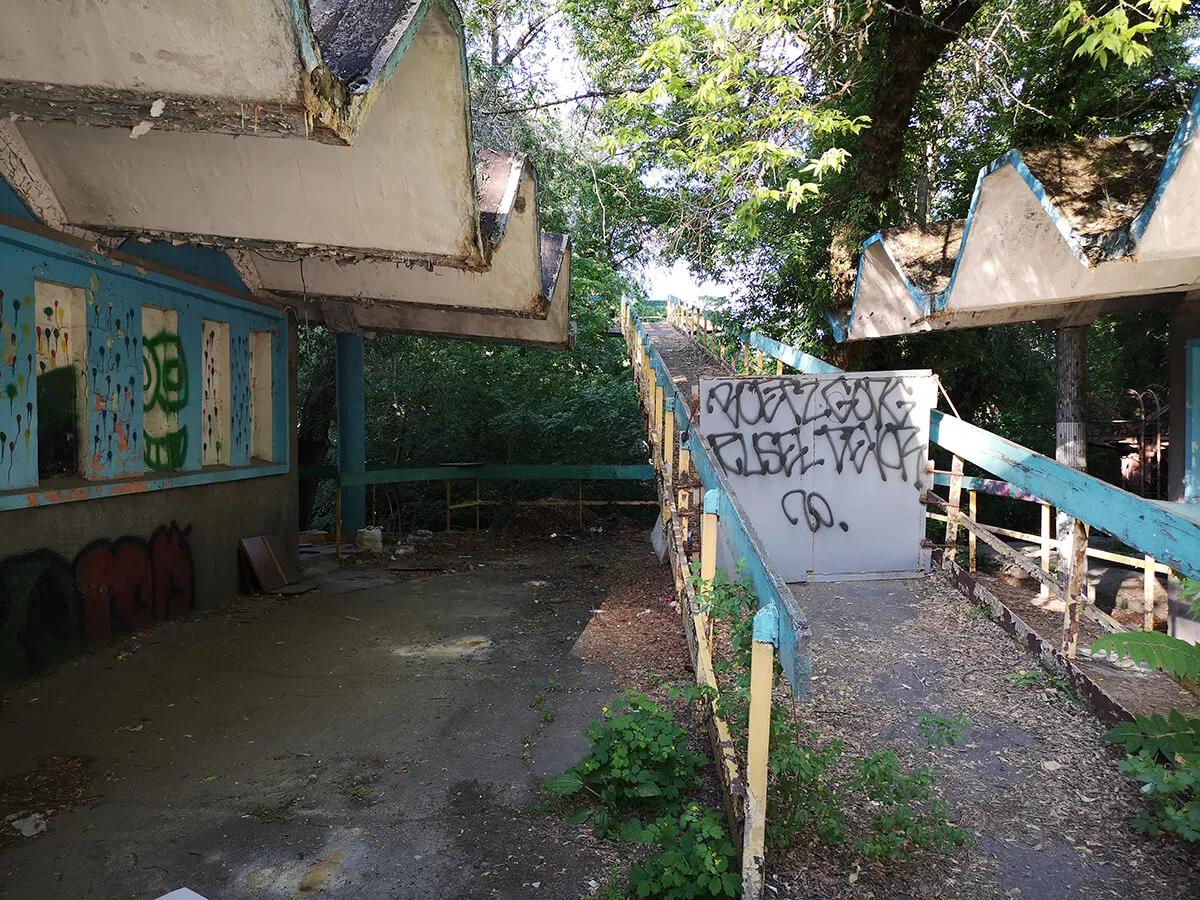
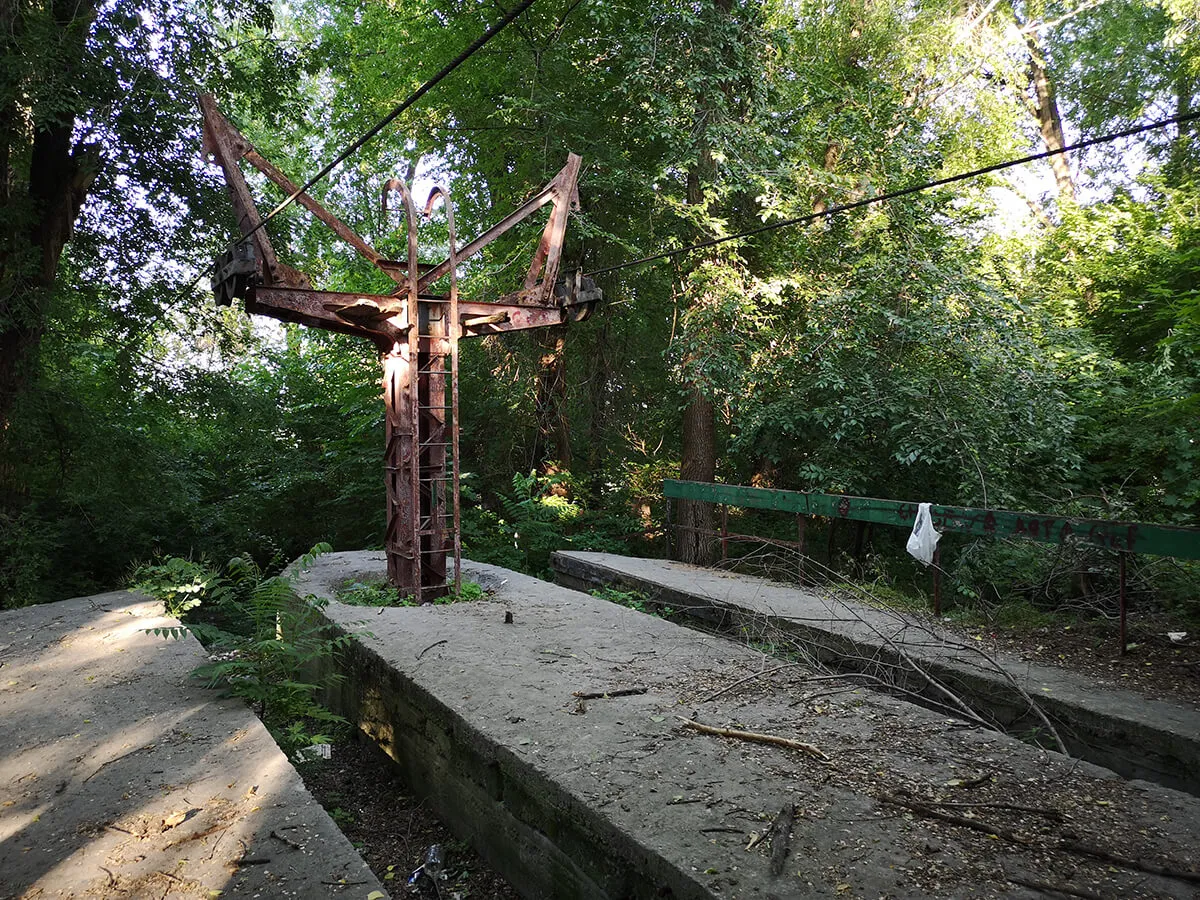
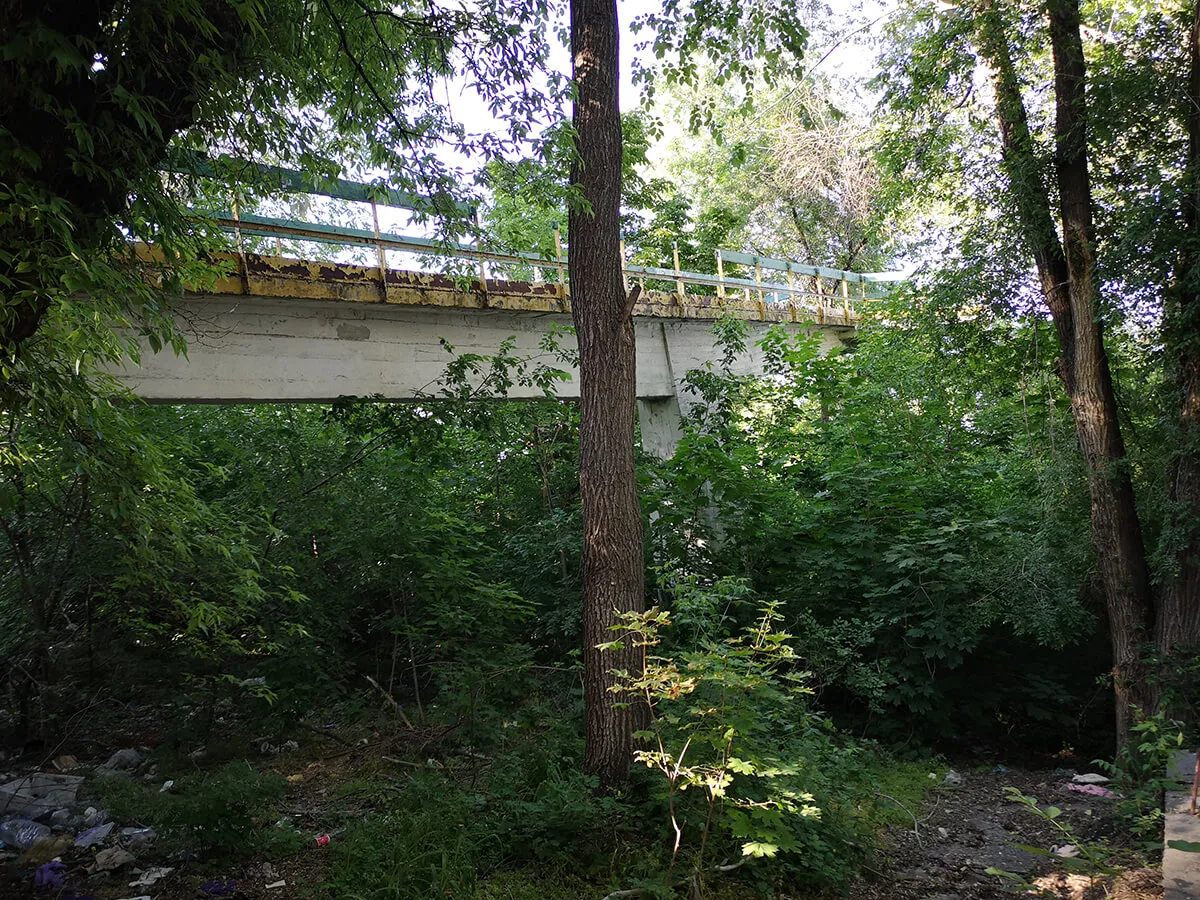
Creating a soundscape
To edit VR360 video in a modern video editor is not a problem, but the sound!!!!
The thing is that any quadrocopter buzzes very loudly, which is unacceptable for sound recording – so all the sound from the original videos had to be «thrown out» at once. Even such a unique video without the original sound will not be fully perceived at all. High-quality voice-over is the key to a comfortable perception of the video (because, believe me, no matter how interesting the video is, few people will watch it if there is a buzzing sound instead of sound).
I know a bit about sound mixing (used to be a sound engineer on small stages – and wrote my own electronic music), so I suggested doing a «soundscape*».
*«Soundscape» is, in short, a branch of sound art that uses environmental sounds as material.
That is, I was faced with the task of recording and reproducing all the sounds that could be heard along the flight path in the captured video. Since I suggested it, I had to do it, and here began the most difficult stage of virtual content creation.
First of all, I’ve never done it myself before, but I really wanted to try (because I’ve experimented with recording ambient neets once). Second, I had to figure out what to record and how to record it – that is, literally calculate all possible sounds for the video. Third, I had to find a portable recorder and go through the whole route and record all the characteristic sounds qualitatively. Fourth, I had to “lay out” all the sound samples on the video, synchronize them and voice them in such a way (taking into account the location of objects on the left/right) that the viewer would feel all the locations naturalistically according to the drone flight. That is, the entire «soundscape» had to be created literally from scratch.
At that time I didn’t have my own compact recorder, so I asked for help from another friend of mine Yaroslav Yaremchuk under the pseudonym 2MinSound. Yarik had a portable digital recorder and relevant experience with it, because he is a sound producer who understands music creation and sound processing, besides he was creating his own «soundscapes» for his whimsical and fabulous animations.
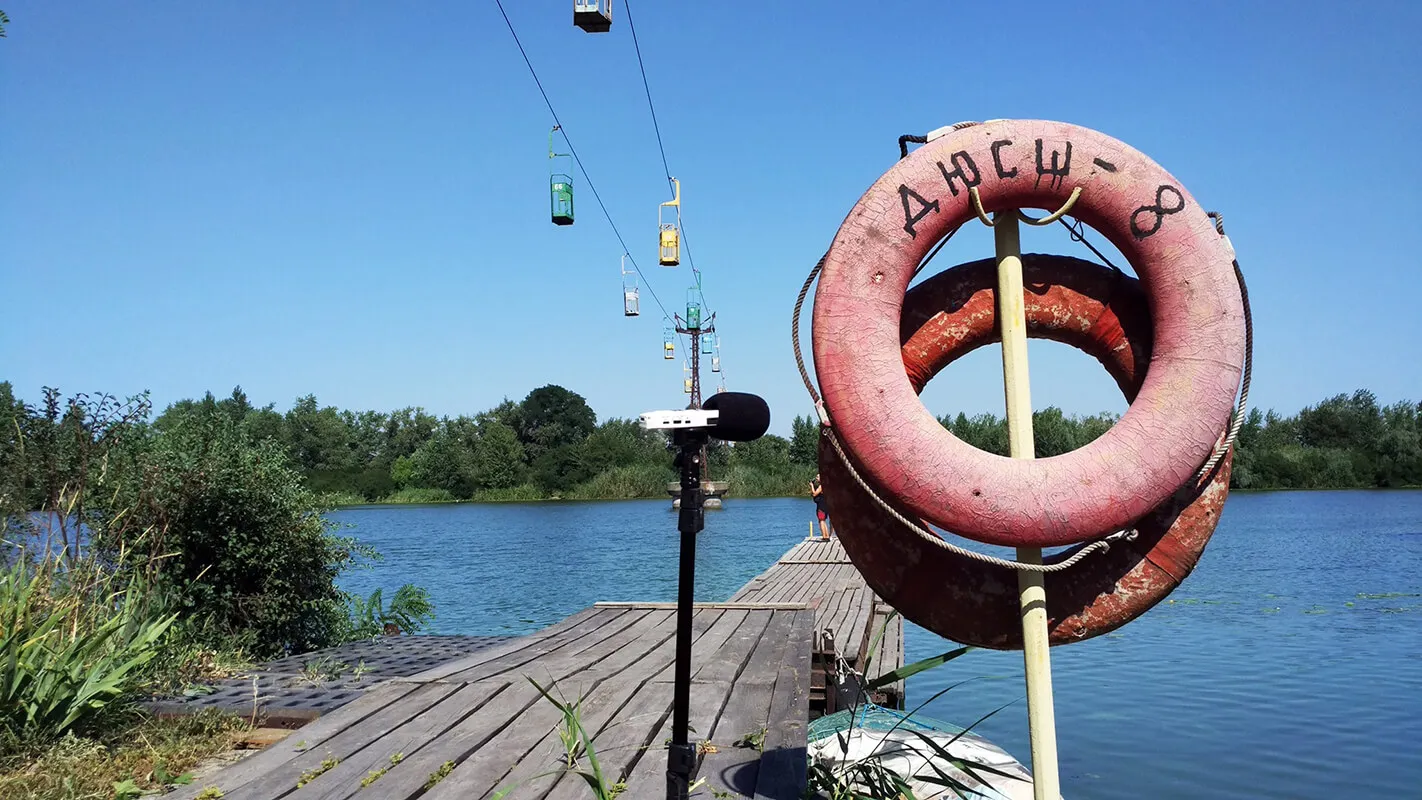
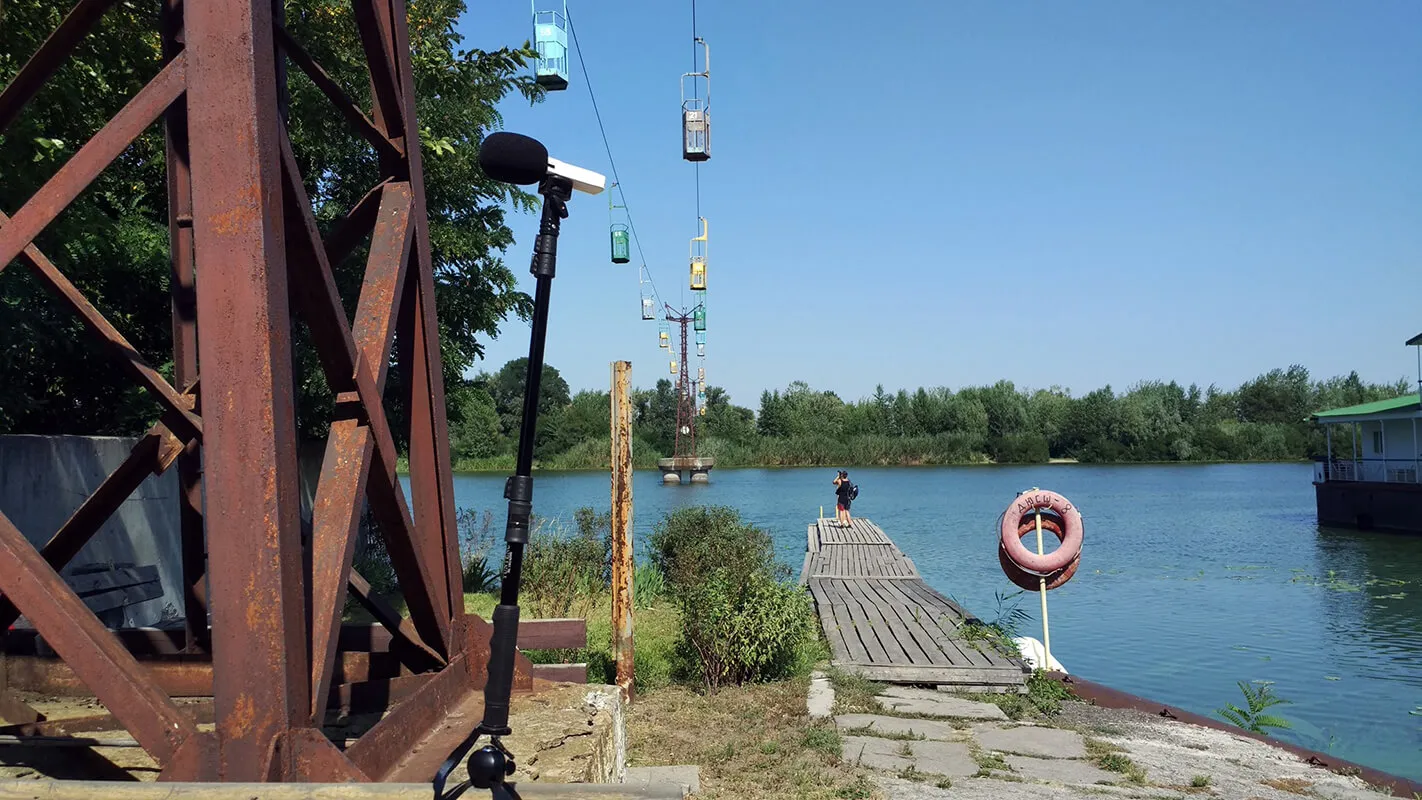
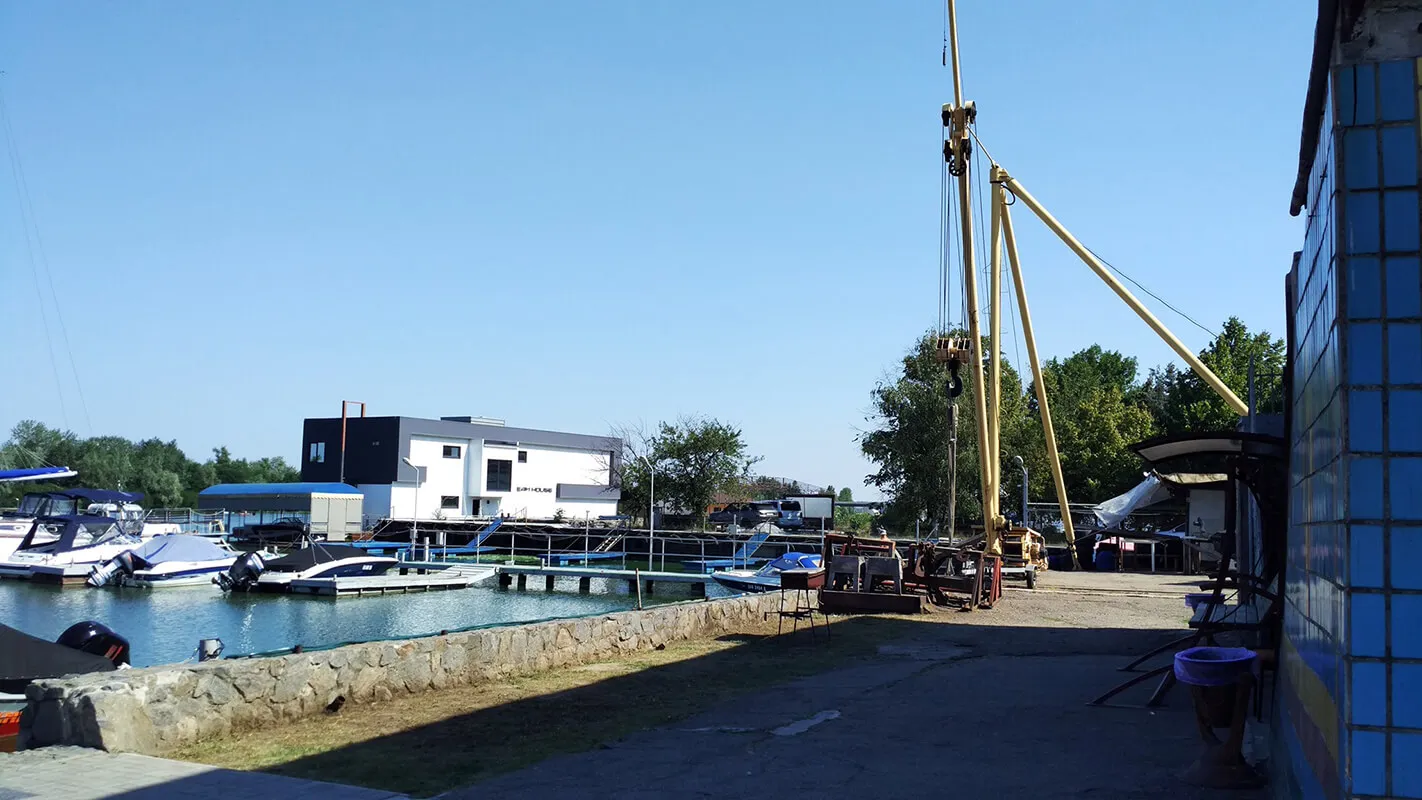

Since all the video was shot along the river (more precisely, the Archbishop’s Strait) it was very important to qualitatively record exactly «river» sounds. Where and how can this be done without the unnecessary noise of a big city?
Here I got the advice of a famous Dnipro yachtsman Vadim Zhuk to contact Maksym Kovalenko from SUP Station Dnipro training and rowing center to record river sounds. So Yaro and I took a windproof recorder and tripod and went to write the sound.
Mr. Maxim kindly agreed to help us and took us to the dock. When we set up the recorder, Mr. Maxim took out a rare carbon paddle and started to create whirls in the river water with it, sounding very similar to calm river waves – this was what we needed and we recorded this sound. There we also recorded «sail sounds» – since at that time there was no yacht with a raised sail at the station (and the weather was windless), Mr. Maxim, as a creative and inventive person, suggested to act as the wind, and we used an awning as a sail – and it worked. At the same location we recorded some more sounds, such as the cries of river birds (which nest on the cable car stand standing in the middle of the Archbishop’s Strait), the rustling of poplar leaves (growing on the shore) and many other sounds.
On Dniprovska embankment we recorded the sounds of the freeway (Sicheslavska Embankment Street), the sounds of footsteps on the paving stones and the creaking of the wooden stairs on the pedestrian bridge that leads to the island. Then we went to Monastyrsky Island to record the creaking of the cable car cabins – we rocked them, it was weird but fun.
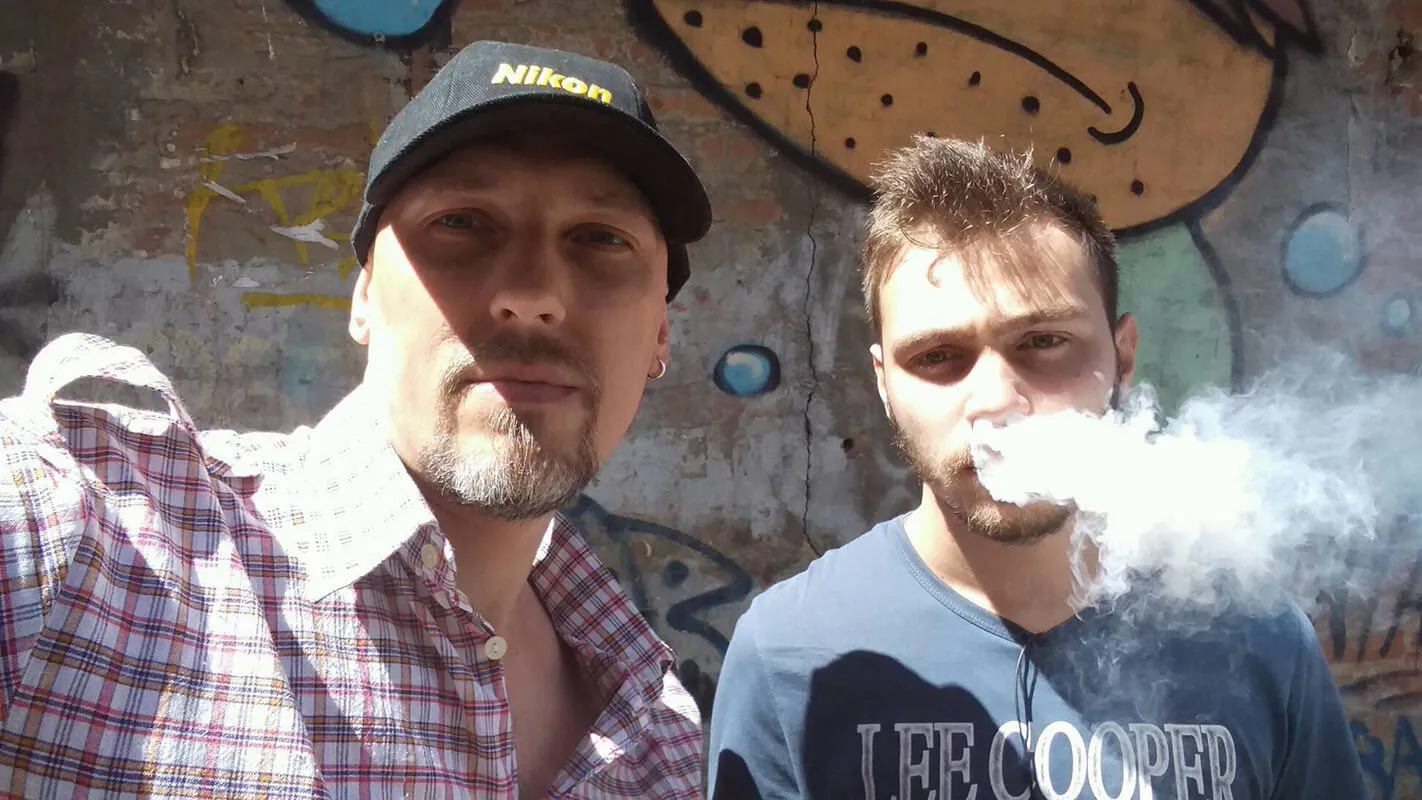
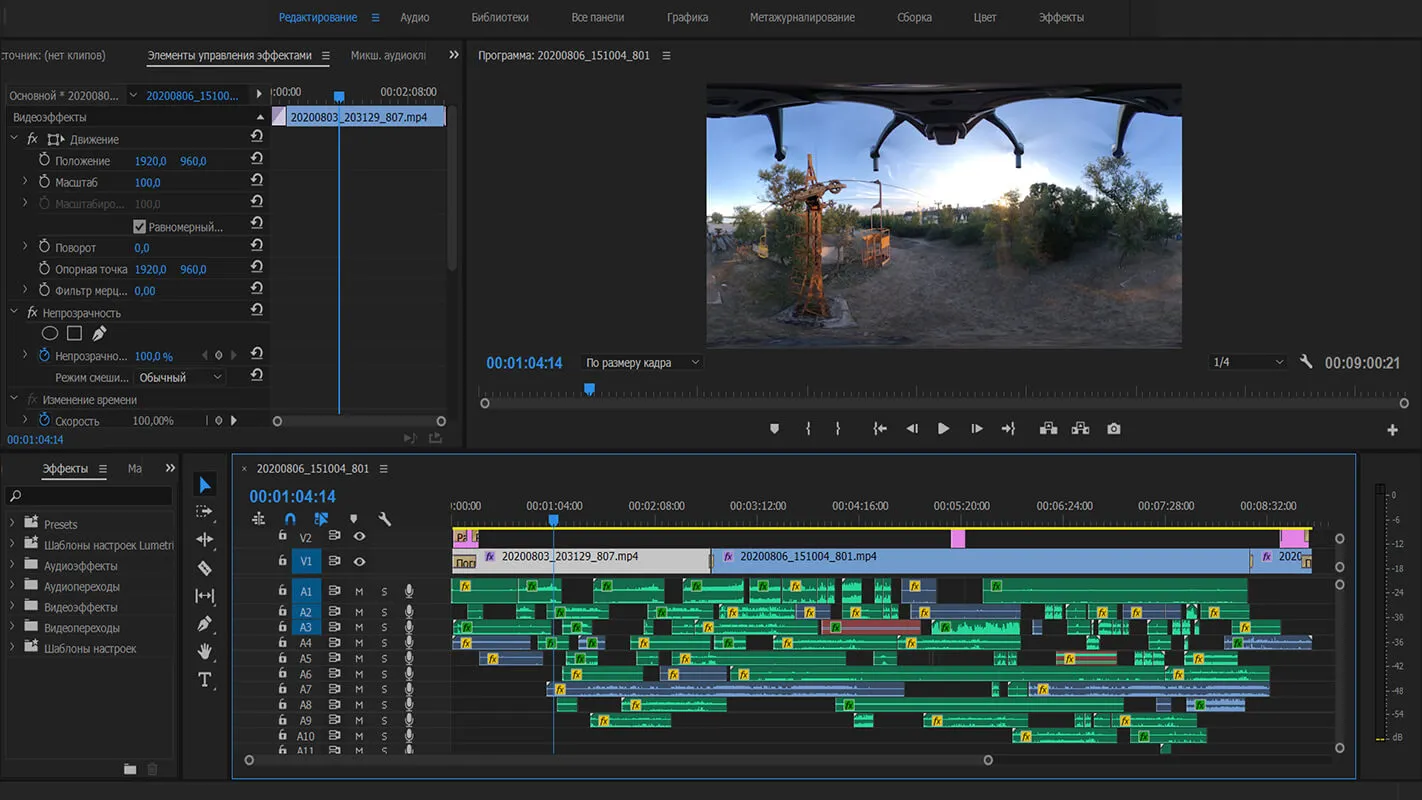
Yaro cleaned up everything we recorded with filters and equalizers in sound editors. And I immersed myself in searching for additional sound samples, because I was missing a lot of different sounds – such as the sound of a ship’s market, the bells of the church on Monastery Island, the noise of children, the sounds of bicycles and many others.
So, after gathering all the materials together, I sat down to edit the video and create a «soundscape» for it – it took a lot of time and effort, but I managed.
To understand the amount of work involved in modeling a soundtrack for a museum video, I will give some statistics. In the program in which I edited the project, only two tracks were allocated for the video: one of which contained three VR360 videos, and the second track was allocated for titling (information and advertising captions). The sound was much more interesting/complicated.
To create a «soundscape» in the project was allocated as many as 11 audio tracks, which contained 35 original audio samples. The total number of individual sounds that were involved in the project reached 110 pieces. In addition, in the fragment where the drone flies along the embankment above the restaurant you can hear the music in the style of «acid jazz» – this is my author’s music, so I put a part of my personal creativity into the project.
Results
Hundreds, or even thousands of people could see the result of my work in the museum space, there was a lot of writing and media coverage about this project, there was a lot of haip…
I somehow sincerely hoped that I would also be mentioned somehow at official events, or listed as one of the creators, but my status in that project is still unclear. Later I received some symbolic payment from the customer (so I was a mercenary?) in several hundred hryvnias (if anything, the cost of such work costs several thousand in foreign currency) – this money went to reimburse transportation services and not to me, but to those who helped me (because they were not enough for more). That is, I actually installed the pilot project for free. But the point here is not money at all, but gratitude. So when I was offered to mount the next project in the cycle under the same conditions, it is quite understandable that I refused (my refusal surprised the customer for some reason at that time ¯\_(ツ)_/¯).
Speaking of gratitude! Only Artem Kostyuk thanked me then. And I, in turn, would like to thank everyone who helped me then (either with advice or physically) in recording and editing the soundscape and video for the virtual museification of the cable car cabin. Even though it wasn’t our project – I think we all gave our best then. And if we were to shoot and edit this project again today – we would do it even better, because we have more experience, and our requirements to technical execution have increased, and I look at this object (I mean the cable car) a little differently. You can always do better than you did before – I’m sure this is inherent in all creative people.
Still, I want to share with you a few snippets of our work to create this video and soundscape, but it would be better to go to the «Time Machine Museum» and watch this video in its entirety (the original video is over 6 minutes long) with VR360 glasses!
Finally, I would like to remind you about my YouTube channel “Den Weissman” – there you can watch my video review of an abandoned cable car. Also, any objects I have visited or my publications or videos can be discussed in a friendly chat room https://t.me/weissman_chat.
And that’s the end of it! Wishing us a peaceful sky!

